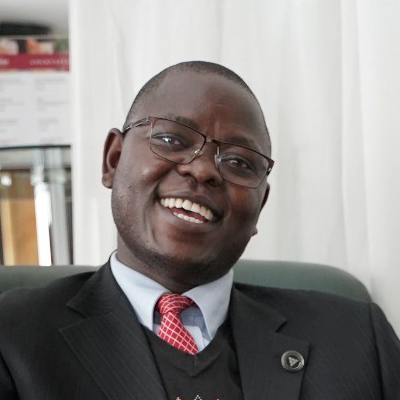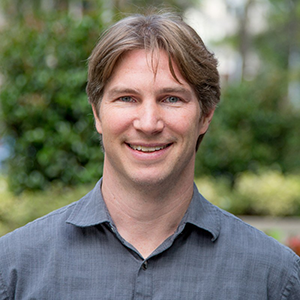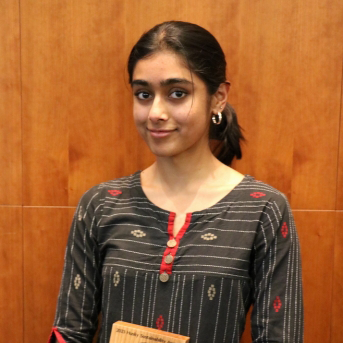
Editor’s Note: AEC industry organizations are increasingly reporting built environment embodied carbon emissions. Variations in life cycle assessment (LCA) scope, methodology, terminology, and other factors result in inconsistent reporting that impedes comparison, benchmarking, or setting reduction targets. These limitations hold the industry back from more rapid adoption of embodied carbon measurement and management practices. The ECHO Project is a potentially transformative collective effort to align embodied carbon reporting across the largest industry on the planet.
International Living Future Institute (ILFI)
I have a small confession to make. I am a chronic sufferer of a very common but pernicious syndrome: FOMO (Fear Of Missing Out). As a youngest child and part of the first generation to experience the internet in our youth, I have had a life-long anxiety that I’m being left out of something very important and very fun. It has its downsides, and I’ve learned to tame it considerably over the years. But more recently, I’ve actually found that FOMO is one side of a two-sided coin for me. The other side is that I am an enthusiastic advocate for convening and coordination, and I often think about who else should be invited to whatever I am doing.
I’m telling you all of this about me, dear reader, because I’ve come to believe that these kinds of things — personality, anxieties, motives, extroversion and introversion, etc. — all matter significantly in our work to transform the building industry.
We already know that this daunting goal requires a collective effort, and we are great at that. We bring our technical contributions, our successes and failures, our persuasion tactics, our facts and data to help the greater good. But all too often, those activities don’t involve a critical act that I believe we need more of, and that is the act of thoughtful and rigorous coordination. Our sense of urgency, our passion and, oftentimes, our desire to help our individual businesses propel us to share what we are doing and add to the collective knowledge base, but it doesn’t require that we agree with each other on critical tactics, on definitions and “what good looks like.” And without this harmonization of tactics and goals, I believe it will be impossible for us to rapidly transform our industry in the ways that our planet and our communities need.
And so I am delighted to share the small example of what we have begun with the Embodied Carbon Harmonization and Optimization (ECHO) project over the past year. It was just one year ago that it all got started, and Andrew Himes asked me to share a bit about the story. As a fellow believer in collective impact, Andrew is a kindred spirit with me on this topic, and I think we both hope that lessons can be learned from the full story of how ECHO came into being. I will say upfront that it has not been a perfect or linear path, nor is the story complete.
The meeting in January was intended to just be a planning meeting, to help Kate come up with a useful agenda for the May meeting. But as the conversation progressed, folks around the table suggested that there was one potential outcome for the April meeting that would be a shame, and we all wanted to avoid it. It was something we had learned from the past: if we held an event to talk about embodied carbon in the built environment and ask developers, architects, owners and others to take action to reduce embodied carbon emissions, we would get a familiar and understandable response, that was something along the lines of:
“There are too many conflicting standards and definitions, too many acronyms, too many certifications asking for slightly different things. It’s all just too confusing and we don’t know what we are being asked to do. We need clear and universal (and achievable) targets to hit before we can really address the problem.”
At that point, I piped in to say that I thought we had a decent shot at getting ahead of that problem. For many reasons, 2022 and 2023 were years where the spirit of communication and collaboration really picked up between green building certification programs and related NGOs. The communication lines were open. We might be able to get a group together to agree to make the paperwork and definitions and other infrastructures as streamlined and harmonized as possible, so that embodied carbon achievement could be evaluated consistently. Especially because the field is so much younger than that of operational carbon accounting, we had a chance to address inconsistencies before they got out of control.
At the same time, it turned out that Architecture2030 and Building Transparency had been talking to a set of large firms about aligning carbon data reporting for the various professional commitment programs (AIA 2030, SE2050, MEP2040, etc.). This idea was clearly aligned and quite similar, so it was woven into the conversation.
Through the grace and tenacity of Kate Ascher, the financial support of the Holcim Foundation, and the efforts of a small group of people, we managed to get a group in a room together just 2 months later. The group was convened by another group- five organizations who took on the responsibility of hosting and leading the conversation: Architecture2030, Carbon Leadership Forum, Building Transparency, ILFI (us!), and USGBC. The group included representatives from all of the major organizations in the US that were presently collecting embodied carbon data at a whole building (and project!) scale, either as a part of a certification or voluntary commitment program, and a few who were just embarking on the task. We spent a day getting to know each other’s organizations, and then discussing the question: how might we work together, how might we harmonize our efforts?
First, the ECHO project is not a new standard or definition. It is a collective project to align ourselves. The activity that we are engaged in is coming to agreement across a variety of programs and organizations so that all of our definitions and embodied carbon data requests are asking for the same things.
Second, coming to agreement is not as easy as it sounds. There is a lot that we can all agree on about embodied carbon reporting in terms of what is in scope and what is not. But sometimes there are very real reasons why our standards and programs might ask for different data. Some programs focus on a theory of change that focuses on only decisions that a particular stakeholder has control over, while others (like our Living Building Challenge) are founded on a different theory of change that means that we look at the holistic impacts of the building, regardless of the stakeholder in control. That’s good! We need a variety of approaches to addressing our industry’s problems. My hope for our community is that we talk more with each other about these theories of change, these definitions of what we care about, and act more like a community of different programs working together toward a common goal.
Finally, we are still iterating on the structure of our project. We all feel very fortunate that Architecture 2030 provided the logistical backbone of the group for the first year, and we are grateful that Carbon Leadership Forum is now serving in that role. Many participants in ECHO are volunteers with full-time jobs. Others work for non-profits like ILFI and USGBC, but without funding to support our work on this project. The act of establishing formal governance structures is a big one, and we haven’t gotten too far down that road. So it requires living in a bit of ambiguity, building trust, good communication, and a fair amount of overcommunication to keep things moving and make sure we stay on the same page. I’ve gotten to know a handful of people more deeply than I would have, had we not embarked on this project, and that is perhaps the greatest accomplishment in my eyes. We need to build these relationships with each other, so that we can build a movement strong enough to catalyze the transformation our industry needs.
And if this piece has left you feeling FOMO about ECHO, I feel you. We are working hard to make sure that all of our peer organizations are in the room, and that others will have opportunities to weigh in to what we are doing in the right ways. But ECHO is just one way that we can come together and align on our shared goals. We all can and should find ways to do this work in the communities that we are a part of. So perhaps the next time you meet with your CLF Hub or other group, you can ask yourselves the same question we started with in March: how might we come together and make something bigger than the sum of its parts? In my experience, the act of trying will bring you into a community in a deeper way, and help to build our little movement to the strength and size that we need for the work to come.

Lindsay Baker







